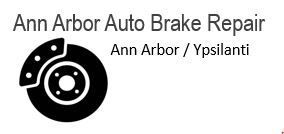How is Brake Maintenance
IS different than
Brake Repair?
Maintenance, Repair, Replacement...
No doubt, you have heard these words, and may have used these terms a lot recently. But while there is some overlap in meaning between the terms, what do they really mean when it comes to taking care of vehicle brakes?
Replacement is simply an exchange of parts, presumably installing a new part to take the place of a broken damaged, or worn-out part.
Repair is restoration work when something gets broken, damaged or stops working, and may include replacement. An example of this may include: replacing brake pads and rotors, flushing brake fluid, replacing brake lines or master cylinders, etc. In these examples, the brake components being changed are generally considered unfit for continued braking service, or broken and needing replacement.
Maintenance are routine activities meant to prevent damage and prolong the life of appliances, fixtures, and the property itself. Repairs may be required during maintenance visit if abnormal wear has occurred and was not previously noticed. An example of this may include: reviewing remaining pad thickness on the brake pads, or topping off the fluid in the master cylinder, applying clean grease to the calipers, purging brake lines of air bubbles, etc. In these examples, nothing is broken nor damaged, but work is still done to slow down deterioration.
Regardless, the Ann Arbor Auto Brake Repair shop has a goal to keep your brakes working and performing well! When brakes are not serviced as recommended, you are more likely to experience faster brake inefficiency, wear-out, or failures, and more emergency repair costs at our facility.
What's the Difference between Repair and Maintenance?
Both repair and maintenance have the same end goal: to enable you to get the most out of your vehicle's brakes. When a customer brings their vehicle to a brake shop, understanding the distinction between a brake maintenance visit and a brake repair visit is crucial for both the technician and the customer.
Brake Maintenance Visit: This typically involves routine checks and services aimed at extending the life of the braking system. During a maintenance visit, the technician might:
- Inspect brake pads and rotors for wear.
- Clean brake components to remove dust and debris.
- Check brake fluid levels and top off if necessary.
- Lubricate any moving parts to ensure smooth operation.
For the customer, this visit can be reassuring. It’s about preventive care—catching small issues before they become significant problems. Regular maintenance can prevent costly repairs and enhance safety.
Brake Repair Visit: In contrast, a repair visit usually means something is wrong.
During a repair visit, the service may involve:
- Replacing worn brake pads or rotors.
- Fixing leaks in the brake lines.
- Addressing issues with the brake calipers or master cylinder.
For customers, this means a more immediate concern. The technician needs to diagnose the problem accurately to restore safe braking functionality. It’s not just about addressing symptoms; it’s about ensuring the vehicle operates safely.
Technically, brake repairs can also be considered as brake maintenance work (corrective maintenance). However, the difference between repair and maintenance work for vehicle brakes is that repairs aim to restore braking functionality while maintenance looks to preserve braking functionality. Simply put, brake maintenance is done to prevent unexpected visits to the brake repair shop when the weekly schedule has no extra time for an unscheduled brake repair at the inconvenient timing of an unscheduled stop.
Distinguishing Between the two visits: The brake shop's ability to differentiate between a maintenance check and a repair need is vital. Technicians rely on inspections, customer reports, and diagnostic tools to determine the right course of action. Clear communication with the customer about findings and recommendations ensures they understand whether they are facing a routine service or a more urgent repair.
In summary, while both maintenance and repair are essential for vehicle safety, maintenance focuses on prevention and longevity, while repair addresses immediate safety concerns. This distinction helps customers feel informed and confident about their vehicle’s health.
